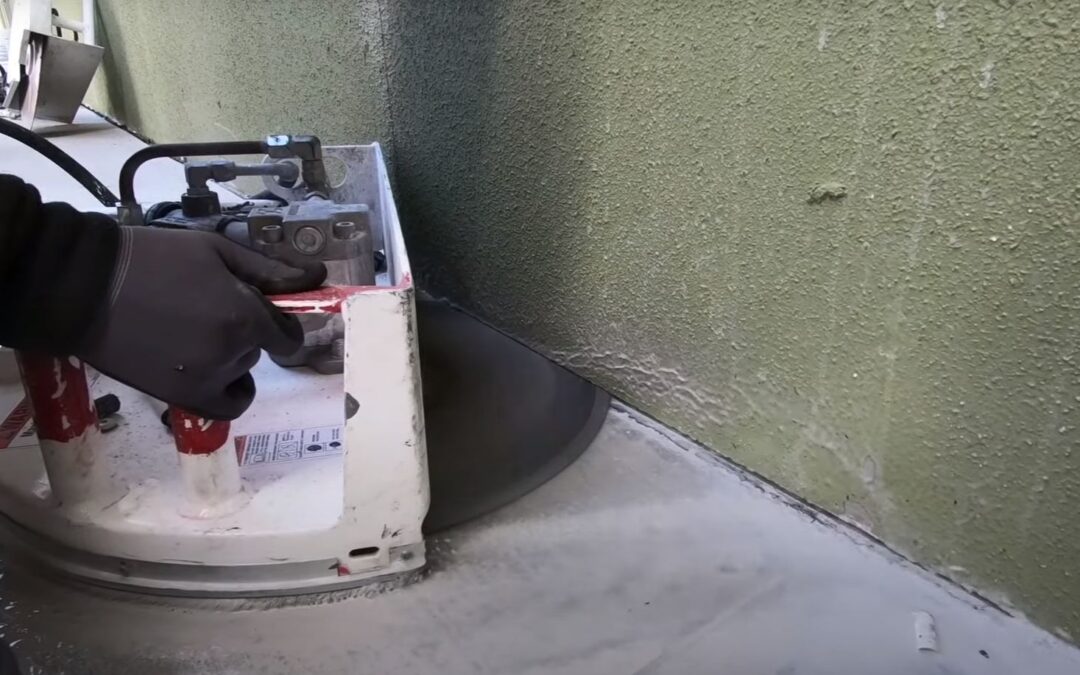Impact of Wall Cutting on Adjacent Structures in Melbourne
Wall cutting in Melbourne‘s bustling construction scene is a common practice, but it’s not without its challenges. Understanding the potential impact on adjacent structures is crucial for maintaining safety and integrity in construction projects.
Soil Movement and Settlement
- Excavation Impact: The process of wall cutting can lead to soil displacement, potentially affecting nearby structures. Factors like soil type, excavation depth, and proximity to other buildings play a significant role.
Construction Vibrations and Neighboring Structures
- Vibration-Induced Risks: The vibrations from wall cutting can travel through the ground, impacting adjacent buildings. This is particularly concerning for historic or delicate structures.
Types of Vibration Damage
- Direct Damage: Includes the flexing of walls and other structural elements due to vibration energy absorption.
- Indirect Damage: Refers to uneven movement in foundations and walls, caused by differential settlement in the soil.
Mitigating the Risks
- Pre-Construction Assessments: Evaluating the potential risks to surrounding structures before starting the project.
- Continuous Monitoring: Implementing seismographs, tiltmeters, and other monitoring tools to track vibrations and settlements during construction.
- Grouting and Other Techniques: Using grouting and other methods to improve ground conditions and reduce the risk of damage.
Equipment Maintenance for Safety
- Ensuring Equipment Safety: Regular maintenance and safety checks of cutting equipment are critical to prevent accidents and ensure project integrity.
Conclusion: Prioritizing Safety and Precision
In summary, wall cutting in Melbourne requires careful consideration of its potential impacts on adjacent structures. By understanding and addressing the risks associated with soil movement, construction vibrations, and equipment safety, construction projects can be executed safely and efficiently. For expert assistance, Bullseye Concrete Cutting Melbourne offers professional concrete cutter services that prioritize safety and precision in every project.
Key Takeaways on the Impact of Wall Cutting on Adjacent Structures
Soil Movement and Settlement Affects Nearby Structures
Wall cutting can cause soil displacement, leading to potential settlement or damage to adjacent buildings, influenced by soil type, excavation depth, and building proximity.
Vibrations from Construction Activities Impact Surrounding Buildings
Vibrations generated during wall cutting can travel through the ground, potentially affecting nearby structures, especially those that are historic or have delicate foundations.
Direct and Indirect Vibration Damage to Buildings
Structures can experience both direct damage, like flexing walls, and indirect damage due to differential settlement in the bearing soils caused by vibrations.
Mitigation Strategies Are Essential for Risk Reduction
Implementing pre-construction assessments, continuous monitoring, and ground improvement techniques like grouting is crucial to minimize potential damage to neighboring properties.
Equipment Maintenance is Key for Safety and Project Integrity
Regular maintenance and safety checks of cutting equipment are critical to prevent accidents and ensure the integrity of the project.
Key Takeaways Table:
| Key Takeaway | Description |
| Soil Movement Impact | Soil displacement from wall cutting can affect nearby structures. |
| Construction Vibrations | Vibrations can impact adjacent buildings, particularly sensitive ones. |
| Types of Vibration Damage | Includes both direct and indirect damage to structures. |
| Mitigation Strategies | Essential for reducing risks to surrounding properties. |
| Equipment Safety | Regular maintenance is crucial for safe and effective wall cutting. |
This overview highlights the importance of understanding and addressing the risks associated with wall cutting in urban environments like Melbourne.
FAQs on the Impact of Wall Cutting on Adjacent Structures
How Does Wall Cutting Affect Adjacent Structures?
Wall cutting can cause vibrations and soil displacement, leading to potential risks like structural settlement or damage to nearby buildings.
What Role Does Soil Type Play in Wall Cutting?
The type of soil greatly influences the extent of impact, with different soils responding differently to excavation and vibration forces.
Can Wall Cutting Cause Vibrations?
Yes, wall cutting generates vibrations that can travel through the ground, affecting adjacent structures, especially those with sensitive foundations.
Are Historic Buildings at Greater Risk During Wall Cutting?
Historic buildings are particularly vulnerable due to their often fragile structures and foundations, making them more susceptible to vibration damage.
What Kind of Damage Can Vibrations Cause?
Vibrations can cause both direct damage, like flexing of walls, and indirect damage, such as differential settlement in bearing soils.
Is Continuous Monitoring Important During Wall Cutting?
Yes, continuous monitoring using seismographs and other tools is crucial to track vibrations and settlements, and mitigate risks to nearby structures.
Can Pre-Construction Assessments Prevent Damage?
Pre-construction assessments can identify risks and help in planning appropriate measures to prevent or minimize damage to adjacent structures.
What Mitigation Strategies Can Be Used?
Strategies include grouting, careful planning, and using less impactful construction methods to reduce the risk of vibration and settlement damage.
How Does the Proximity of Buildings Affect Impact from Wall Cutting?
The closer a building is to the wall cutting site, the greater the potential impact due to stronger vibrations and soil movement.
Are There Specific Regulations for Wall Cutting Near Other Structures?
Yes, there are regulations and guidelines to ensure safety and minimize the impact on adjacent structures, which vary based on location.
What Should Be Done if Damage Is Noticed on Adjacent Properties?
If damage is noticed, construction should be paused, and a structural assessment should be conducted to determine the cause and necessary remedial actions.
Can Wall Cutting Affect Underground Utilities?
Yes, wall cutting can potentially affect underground utilities like water, gas lines, and electrical cables, especially if not accurately mapped out before construction.

